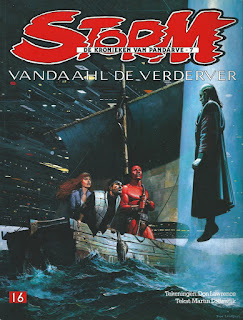Modern science tells us Venus is a hellscape resulting from runaway greenhouse effect, but that was not always the way we imagined it to be. Early sci-fi and pulp sci-fi Venus was general assumed to be verdant under its eternal cloud cover. Sure, even before space probes spoiled all the fun, Venus had already been conceived of as a harsh desert wracked by storm (see Anderson's "Big Rain"), but mostly it's drippy jungles.
That still leaves a lot of variation. Here are some random charts to make your own pulp Venus or similar worlds:
Basic Terrain:
1-2 Oceanic
3-4 Desert
5-6 Jungle
7-8 Swampy/Low-lying
9-10 Tidally Locked (as seen in Weinbaum's "Parasite Planet." Dayside is a desert and nightside is frozen. Action's in the Terminator)
Basic Theme (probably applies to anything but desert, but up to you)
1 Eden - Almost too pleasant and inviting
2 Primeval - Like Earth in an earlier age, perhaps the Mesozoic or Triassic?
3 Hostile - Too hot, too wet, too fecund, too alien. Humankind finds it tough. Roll below.
4 Hell - Like hostile turned up all the way. Roll Below.
Why So Inhospitable?
1 Endless Rain (Bradbury, "Death-By-Rain")
2 Parasitic Life
3 Horrible Storms
4 Giant Monsters
5 Everything Wants to Eat You
6 The Natives Have a Horrible Secret
Dominant Lifeform
1 Reptilian* (includes Dinosaurs in the pulp era)
2 Amphibian
3 Plant/Fungal
4 Icthyoid
5 Humanoid
6 Hyper-evolved - brain things/energy creatures
One Notable Thing
1 Gaseous Sea
2 Alluring Slave Girls/Guys
3 Rare Element
4 Mysterious Artifact
5 Giant Trees
6 Ancient Ruins
add your own!
15 hours ago























